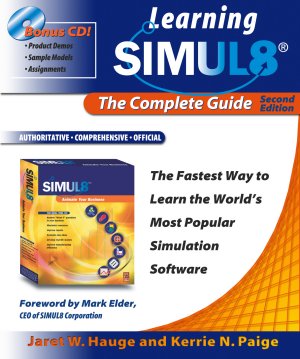Entries in Capacity Planning (12)
Creamy or Crunchy?
Unilever (Skippy Peanut Butter)
 The Skippy family of peanut butter includes six different products that are packaged in more than 50 different products for sale around the world. NovaSim worked with Unilever's industrial engineering team to develop a SIMUL8 discrete event simulaiton model that was used to optimize overall production performance for the Skippy brand.
The Skippy family of peanut butter includes six different products that are packaged in more than 50 different products for sale around the world. NovaSim worked with Unilever's industrial engineering team to develop a SIMUL8 discrete event simulaiton model that was used to optimize overall production performance for the Skippy brand.
Batch Production
Unilever (Best Foods Mayonnaise)
 We have all seen recipes for mayonnaise. The ingredients are very simple: eggs, vegetable oil, maybe some lemon juice, vinegar, salt and pepper. If you set your mind to it, it would be a simple matter to make up a batch in your kitchen. But what if you needed to make more than 1 million pounds per day? NovaSim developed a discrete event simulation model in SIMUL8 to help Best Foods do just that.
We have all seen recipes for mayonnaise. The ingredients are very simple: eggs, vegetable oil, maybe some lemon juice, vinegar, salt and pepper. If you set your mind to it, it would be a simple matter to make up a batch in your kitchen. But what if you needed to make more than 1 million pounds per day? NovaSim developed a discrete event simulation model in SIMUL8 to help Best Foods do just that.
Small Project, Big Results
Dynacraft
As consultants we often are faced with large complex projects that span weeks or months. However, simulation also has great benefit on smaller projects. Although this simulation was started and completed within a single day it still has proven to privide significant value to Dynacraft, a subidiary of Paccar Inc.
Setup Time Reduction
Flexfab
 In an effort to reduce setup times on key extrusion equipment and balance thier product mix of high volume products and low volume specialty products, Flexfab of Hasting, Michigan looked to SIMUL8 and NovaSim for a solution.
In an effort to reduce setup times on key extrusion equipment and balance thier product mix of high volume products and low volume specialty products, Flexfab of Hasting, Michigan looked to SIMUL8 and NovaSim for a solution.
Surgical Scheduling
Hunter New England Area Health Service
Hunter New England Area Health Service is a large governmental health services organization in New South Wales, Australia. Serving approximately 850,000 people, the HNEAHS includes 3 teriary hospitals, 4 rural referral hospitals, 12 district hospitals and 10 community hospitals. NovaSim, working together with PricewaterhouseCoopers Australia, developed a comprehensive simulation model to help manage surgical block management and overall waitlist management for two of the largest facilities in the region. Used to solve a variety of what-if questions when it was first developed, the model remains in consistent use several years later as an ongoing wait list management tool.


 Capacity Planning
Capacity Planning